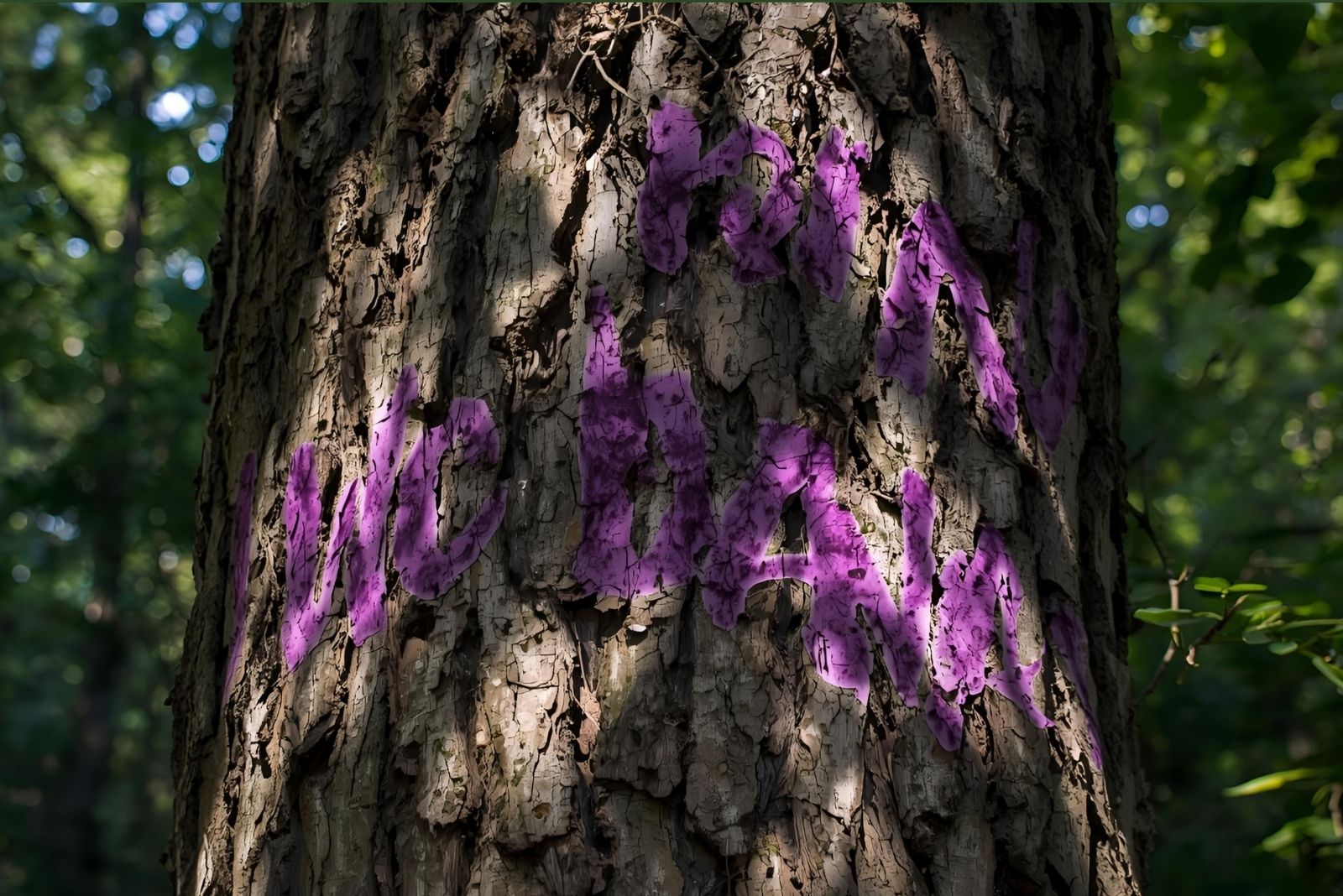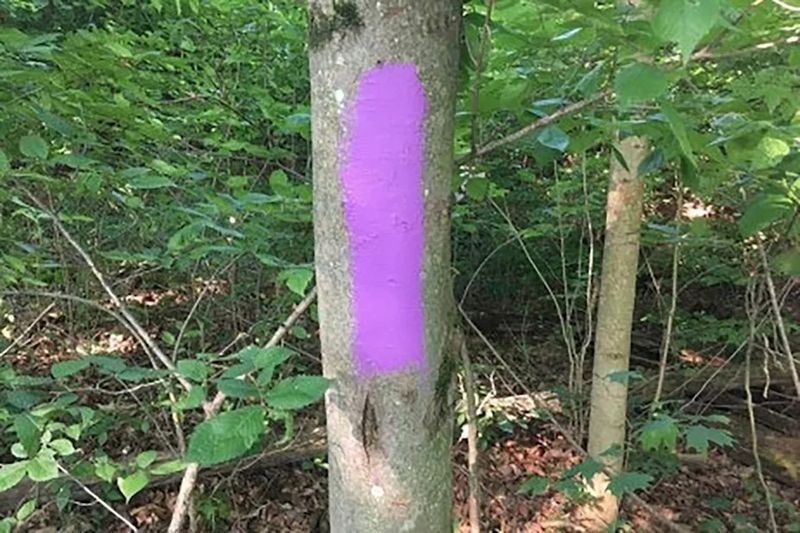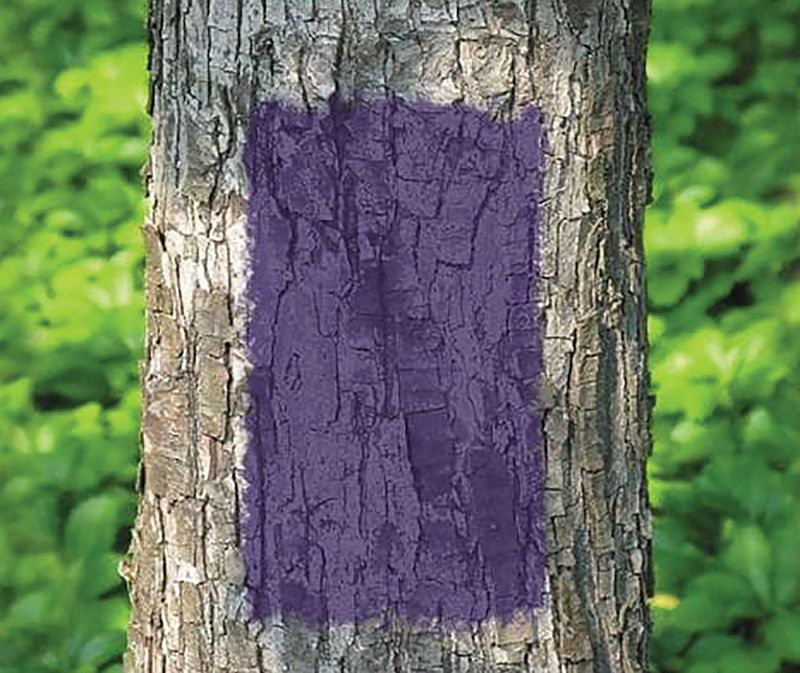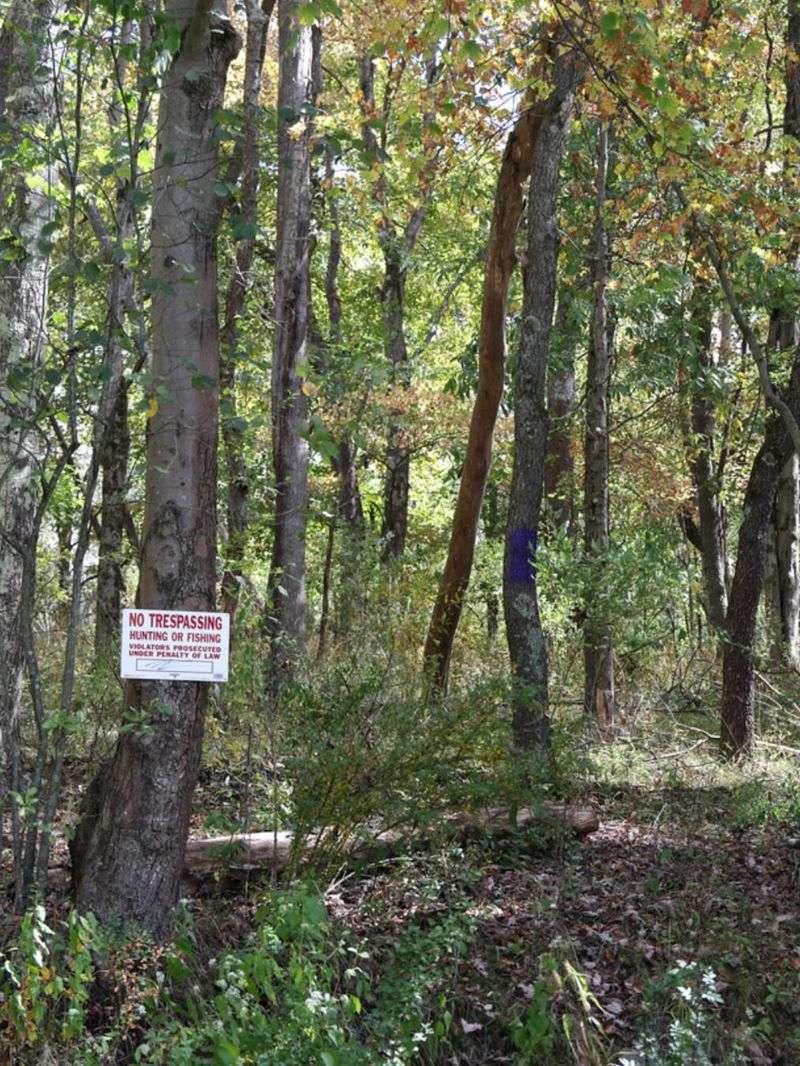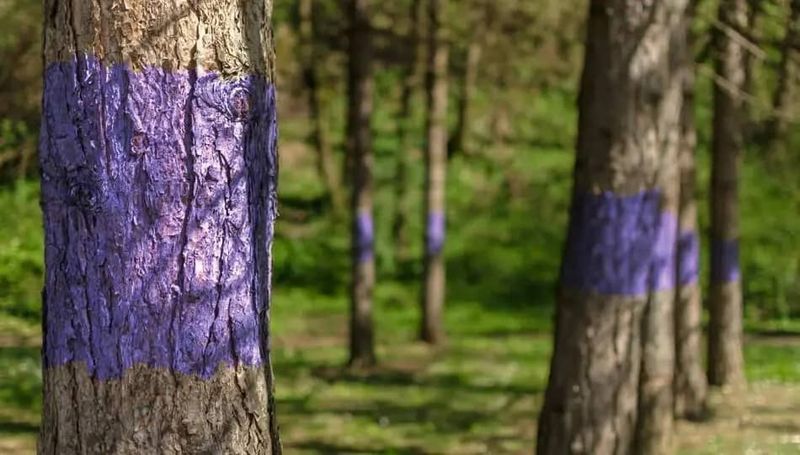Have you noticed purple paint splashed on trees around Utah lately? It might look like random graffiti, but those bright purple marks carry an important message for hikers, hunters, and outdoor lovers.
Understanding what this paint means could keep you out of trouble and help you respect private property boundaries.
1. Legal No Trespassing Signs
Purple paint on trees serves as an official way to mark private property in Utah. Landowners use this method instead of posting traditional metal or wooden signs that can fade, rust, or get stolen over time.
The law recognizes these purple marks as legal warnings, meaning you could face trespassing charges if you ignore them. Property owners find this system cheaper and easier to maintain than replacing signs every few seasons.
2. Cheaper Than Traditional Signs
Buying and installing metal signs across large properties costs hundreds or even thousands of dollars. A simple can of purple paint, however, runs about fifteen bucks and covers dozens of trees along property lines.
Weather beats up signs pretty quickly in Utah’s harsh climate. Paint lasts much longer through snow, wind, and sun, saving landowners money and time on maintenance trips to remote corners of their land.
3. Increased Property Development
Utah’s population has grown rapidly over recent years, pushing new neighborhoods closer to wild spaces. As developers buy and build on land that used to feel wide open, clear boundaries become more important than ever before.
New homeowners and builders mark their property lines with purple paint to establish clear limits. More people living near forests means more potential for accidental trespassing, making these visual warnings increasingly necessary across the state.
4. Protection From Liability Issues
Landowners worry about getting sued if someone gets hurt while trespassing on their property. Clear boundary markings help protect them legally by proving they warned people to stay out of certain areas.
Insurance companies often recommend purple paint markers as a smart way to reduce liability risks. When boundaries are obvious, property owners have stronger legal standing if uninvited guests ignore the warnings and something goes wrong on their land.
5. Wildlife Management Concerns
Hunting season brings thousands of people into Utah’s backcountry each year. Private landowners who manage their property for specific wildlife populations need clear boundaries to control who enters and where hunting happens.
Purple marks help prevent conflicts between hunters and landowners over property access. Some owners allow hunting by permission only, while others want to protect wildlife on their land completely, making these visible markers essential for everyone’s safety and understanding.
6. Rising Trespassing Problems
More outdoor enthusiasts hitting the trails means more people accidentally wandering onto private land. Social media posts about secret hiking spots sometimes lead crowds to cross property lines without realizing it, frustrating landowners who value their privacy.
Purple paint has become a popular response to these increasing trespassing issues. Landowners hope the bright color catches attention and prevents innocent mistakes, while also establishing clear evidence for repeat offenders who choose to ignore the boundaries.
7. Education and Awareness Campaigns
Utah parks and recreation departments have ramped up efforts to teach people about the purple paint law. Many hikers and campers still don’t know what those marks mean, so agencies share information through social media, trail signs, and visitor centers.
As awareness grows, more landowners feel confident using this marking system. The combination of education campaigns and increased usage creates a cycle where purple paint becomes more recognized and respected throughout outdoor communities across the entire state.

